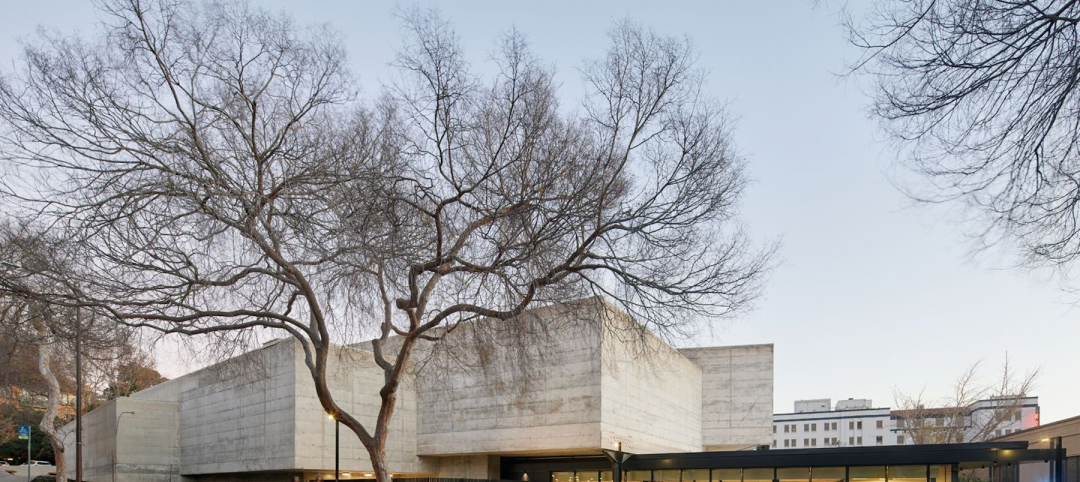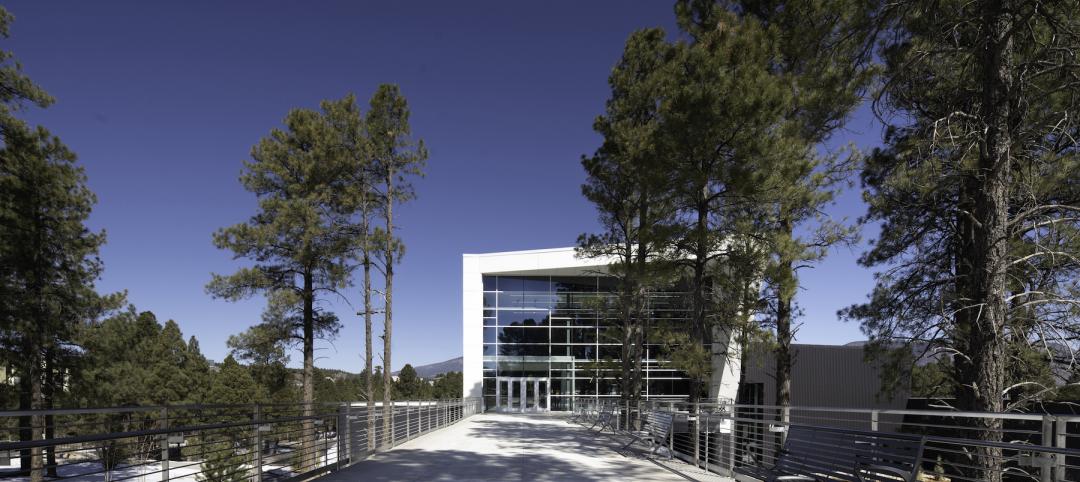Grumman/Butkus Associates, a firm of energy efficiency consultants and sustainable design engineers, has released the results of its 2015 Hospital Energy and Water Benchmarking Survey, focusing on healthcare facilities’ resource usage trends and costs for calendar year 2014.
Since the survey was initiated 20 years ago, hospitals’ overall fossil fuel use has trended downward, but electricity use isn’t declining much. The average combined Btu/sf for facilities in the survey (electricity plus gas/steam) was 232,981 in CY2014, compared with 248,456 in the 2014 survey (CY2013). Harsher winter temperatures in 2012-13 compared with 2013-14 likely had something to do with the usage decline.
Square-foot prices for gas/steam were up year-to-year ($1.01 in 2013, vs. $1.16 in 2013), but square-foot prices for electricity fell ($2.26 in 2013 vs. $2.12 in 2014). The overall result of these usage and pricing patterns was that hospitals’ total sf costs for energy (gas/steam plus electric) hardly changed: $3.29 in CY2014, vs. $3.27 in CY2013.
Carbon footprint results have stayed fairly steady over time, at about 60 pounds of CO2 equivalent per ft2 per year, but have been slowly trending downward since 2010.
Reporting facilities displayed a range of usage patterns. For instance, some participants are using more than 200,000 BTU/ft2 in fossil fuel annually, compared with a general mid range of facilities (about 150,000 BTU/sf/year) and those that used least (100,000 BTU/sf/year). Similarly, a few hospitals consume more than 40 kWh/sf/year in electricity, compared with a mid-range of about 25 kWh/sf/year. A few squeaked by with less than 20 kWh/ft2.
“Hospitals are investing in efficiency measures and making progress, but have much further to go,” says G/BA Chairman Daniel L. Doyle. “Some of the low-hanging fruit is gone, but there are still many cost-effective opportunities remaining for reducing energy usage and costs.”
Hospital water use is also gradually declining, currently averaging about 49 gallons per square foot per year (compared with nearly 70 gallons/sf/year a decade ago). Costs per gallon are rising, however, now averaging $0.38/sf. As recently as 2007, hospitals were paying just $0.27/sf.
“The downward usage trend reflects a movement to eliminate city-water-cooled equipment, as well as the increased use of low-flow and occupancy-based plumbing fixtures,” says Doyle. “Water usage is an emerging issue. There is still much room for improvement.”
The G/BA survey has provided a free annual benchmarking resource since its initial release in 1995. Hospitals are invited to participate without charge by submitting responses to a short list of questions. Information for this edition was provided by 117 hospitals located in Illinois (56), Wisconsin (33), Michigan (5), Indiana (5), and seven other states.
Full results and analysis, as well as information about participating in the 2015 survey, are available at the firm’s website. For additional information, contact Doyle (ddoyle@grummanbutkus.com) or Julie Higginbotham (jhigginbotham@grummanbutkus.com).
Related Stories
Museums | May 31, 2022
University of Texas at Dallas breaks ground on new 12-acre cultural district
The University of Texas at Dallas (UT Dallas) recently broke ground on the Crow Museum of Asian Art, the first phase of a new 12-acre cultural district on campus.
BAS and Security | May 26, 2022
Can your intelligent building outsmart hackers?
ESD's security services studio leader Coleman Wolf offers tips, advice, and lessons for protecting real estate assets from cyberattacks.
Sports and Recreational Facilities | May 26, 2022
WNBA practice facility will offer training opportunities for female athletes and youth
The Seattle Storm’s Center for Basketball Performance will feature amenities for community youth, including basketball courts, a nutrition center, and strength and conditioning training spaces.
Engineers | May 25, 2022
Epstein: The next 100 years
Multidisciplinary design and construction firm Epstein turned 100 in 2021. Two of its Directors discuss the firm's future, and what other AEC firms can learn from Epstein's experience. Darrin McCormies, Director of Industrial Services, and Ed Curley, AIA, Director of Architecture + Interiors, talk with BD+C's Rob Cassidy.
Multifamily Housing | May 25, 2022
9 noteworthy multifamily developments to debut in 2022
A 1980s-era shopping mall turned mixed-use housing and a mid-rise multifamily tower with unusual rowhomes highlight the innovative multifamily developments to debut recently.
Coronavirus | May 20, 2022
Center for Green Schools says U.S. schools need more support to fight COVID-19
The Center for Green Schools at the U.S. Green Building Council released a new report detailing how school districts around the country have managed air quality within their buildings during the second year of the COVID-19 pandemic.
Regulations | May 20, 2022
Biden’s Clean Air in Buildings Challenge aims to reduce COVID-19 spread
The Biden Administration recently launched the Clean Air in Buildings Challenge that calls on all building owners and operators, schools, colleges and universities, and organizations to adopt strategies to improve indoor air quality in their buildings and reduce the spread of COVID-19.
Building Team | May 20, 2022
Caltech breaks ground on a new center to study climate and sustainability
The California Institute of Technology (Caltech) recently broke ground on its Resnick Sustainability Resource Center.
Laboratories | May 20, 2022
Brutalist former Berkeley Art Museum transformed into modern life science lab
After extensive renovation and an addition, the former Berkeley Art Museum and Pacific Film Archive at the University of California, Berkeley campus reopened in May 2022 as a modern life science lab building.
Sports and Recreational Facilities | May 19, 2022
Northern Arizona University opens a new training center for its student athletes
In Flagstaff, Ariz. Northern Arizona University (NAU) has opened its new Student-Athlete High Performance Center.


















